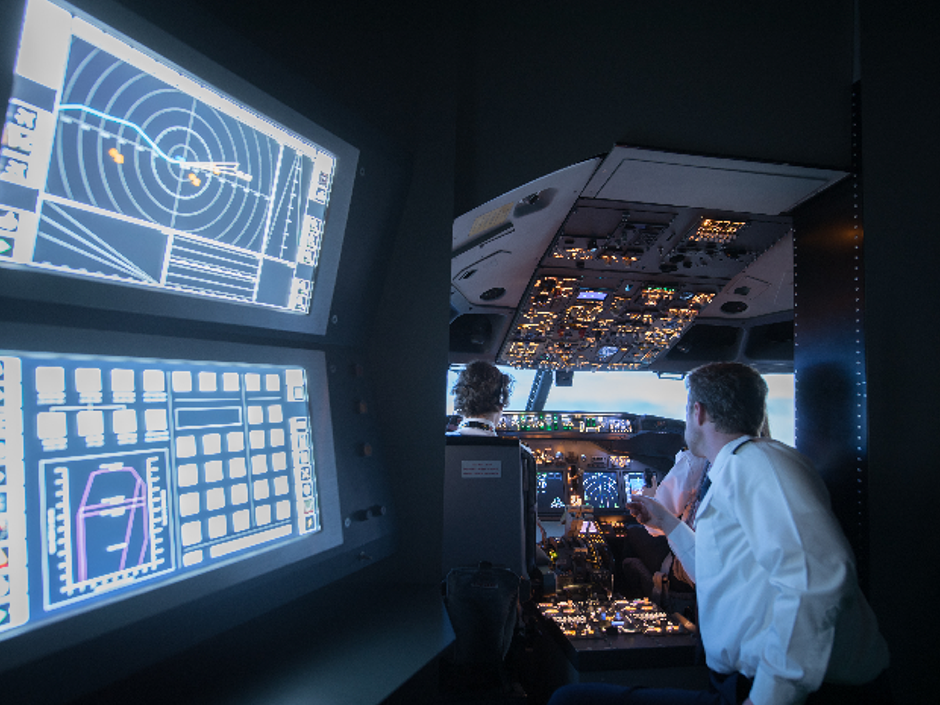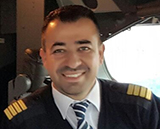VENYO FLIGHT SIMULATORS, BELGIUM
With the kind invitation of Mr Jean-Claude Streel, Business Development Manager at Venyo Flight Simulators, CockpitAero will be paying a visit to the Venyo facilities in Gosselies, Belgium, to fly one of the state-of-the-art fixed base B737NG simulators built by Venyo. Before the visit, we approached Mr Streel with some interesting questions that would help us elaborate on the current activities of Venyo in the market.
Venyo design, build and sell professional flight simulators for training purposes.
Venyo simulators enable customers to opt for the rental model of simulator acquisition with the added benefit of lower operational costs. Furthermore, the device has a modular set-up design concept, enabling easy relocation of the simulator in the long run. Also, unlike full flight simulator counterparts, the fixed base simulators don’t not need dedicated engineers for daily operations. The device itself is qualified as an FTD Level 2 simulator.
According to EASA Certification Specifications for Aeroplane Flight Simulation Training Devices, FTD Level 2 simulator is a full-size panel of replicated system(s) which have actuation of controls and switches that replicate those of the aeroplane simulated. Flight dynamics model that accounts for various combinations of drag and thrust normally encountered in flight corresponding to actual flight conditions, including the effect of change in aeroplane attitude, sideslip, thrust, drag, altitude, temperature, gross weight, moments of inertia, centre of gravity location, and configuration. The simulator would simulate applicable aeroplane system operation, both on the ground and in flight. Systems would be operative to the extent that all normal, abnormal, and emergency operating procedures can be accomplished. Instructor controls would enable the operator to control all required system variables and insert abnormal or emergency conditions into the aeroplane systems. Control forces and control travel would correspond to that of the replicated aeroplane. Control forces would react in the same manner as in the aeroplane under the same flight conditions. Computer capacity, accuracy, resolution, and dynamic response would be sufficient to fully support the overall fidelity, including its evaluation and testing. These are only some of the many other qualities and capabilities the simulator shall possess before an approval FT Level 2 can be granted.
Following are the list of questions Venyo were very happy to answer for us, for which we like to thank the team of Venyo for their transparency, particularly Mr Streel. Meanwhile, you can explore more about Venyo on www.venyo.aero.
CockpitAero: We already know that Venyo is a manufacturer of excellent flight simulator products, can you tell us a bit about why you particularly concentrate on building B737NG simulators?
Venyo: At the early stage of our project back in 2008, we had decided to focus on the single-aisle twinjet family. We had thus to choose between A320 and B737NG. Instead of choosing the easy option, the second aircraft was our final choice because of its older design.
CockpitAero: How big is your team and what kind of professionals make up your team? Only pilots and engineers?
Venyo: We currently empl·oy 30 people with a good balance between engineers, technicians and pilots.
CockpitAero: What are the fundamental differences between a fixed base simulator and a full flight simulator?
Venyo: There is NO MOTION on our fixed base simulator. For the rest, we’re using a real cockpit shell with the original control systems, genuine buttons and knobs, a collimated visual system from Q4 Services (200x40, tri-channels) and an IG from RSi Visuals.

CockpitAero: What are the benefits of fixed based simulators over that of full flight simulators?
Venyo: Easier installation in any location which offers a footprint of 7x7m, with 5 m in height with a flat floor where the temperature cannot go below 5° C nor over 30°C, dry and practically dust-free. Last but not least about power consumption, our solution requires 220 volts and uses maximum 20 amps.
CockpitAero: Can you provide the same level of training on a fixed base simulator as you would on a full flight simulator?
Venyo: Certainly not but high-quality Fixed Base Simulators (FBS) like ours are becoming increasingly popular to off-load training tasksat an unrivalled budget that would otherwise be done in an expensive Level D Full Flight Simulator (FFS). Regarding the EASA regulations, this is the ideal tool for cockpit procedure training, cabin crew LOFT, pilot assessment, maintenance training, at least 16 hours of 737NG TR, MPL, etc…
CockpitAero: Would Venyo consider building Full Flight Simulators eventually?
Venyo: No, this is not an option today.
CockpitAero: How does Venyo keep up with advancements in technology?
Venyo: We started this project from a blank page, so we had the opportunity to design every single element in using the latest cutting-edge technologies to foster its real time control. We have now the full access to the overall solution making the product easy to control, to maintain, to customize and to upgrade.
CockpitAero: How much of an EASA approved B737NG Type Rating course can you undertake on an FTD Level 2 fixed base flight simulator?
Venyo: Feel free to find on page 49 of this official EASA document https://www.easa.europa.eu/system/files/dfu/Part-ORA.pdf(June 2016) a section which mentions that only 16 hours of a type rating course must be done on FFS. That leaves the door open for a lot of hours in a qualified FBS like ours.
CockpitAero: Do you use Venyo designed flight dynamics software packages on your simulators or are they Boeing products?
Venyo: Our simulator products include our own ‘Data Package’ that has been built out of an hundred hours of flight tests on a 737-800 winglets SFP with CFM56-7B26, in full collaboration with EASA/BCAA and leading experts in this matter.
CockpitAero: What are the prominent qualities you feel proud to reflect upon about the Venyo simulator products?
Venyo: Despite the difficult task to be achieved in doing things in a different way, we’re today on the market with a product which has been certified at the highest level of qualification for a device without motion by the EASA and the CAAC. Two ‘launch customers’ have had faith in us in the early phase of our business activity. They’ve both received their product which are now ‘Ready-for-Training’ and their commercial operation will start in the next coming weeks. At Venyo, our ‘Pay-by-the-Hour’ rental model is as some may say a ‘disruptive’ approach in the market. Our flexible, monthly billing includes minimal contractual number of hours or metered fees (if minimum is exhausted) at a predefined hourly rate. The idea is to offer a simulator constantly maintained to premier standards, with no upfront nor hidden fees (not necessary to say more!). Our goal is to also offer more flexibility for the customer in terms of adjusting to the ongoing changes in technology and capacity.
Many experts in the flight training community recommends greater use of flight simulators and other aviation flight training aids to improve pilots’ response to a number of unusual incidents they may encounter. At Venyo, we entirely share this vision and we are glad to bring an affordable answer to considerably increase the simulator hours without exploding the training costs accordingly. We don’t want to replace or compete the FFS but we simply offer a serious alternative that can work side by side with them to lower costs without sacrificing training quality. Our ambition is to play a significant role in the worldwide pilot training market!

